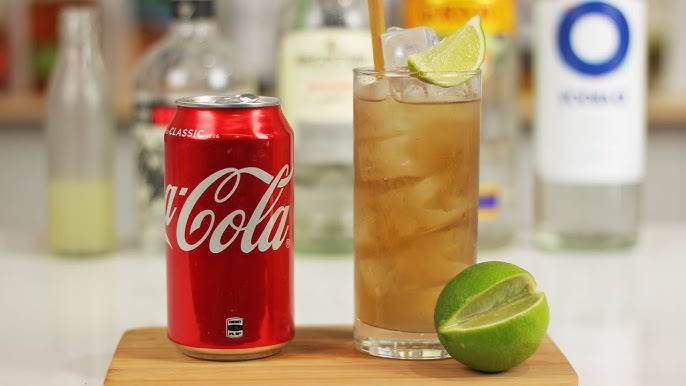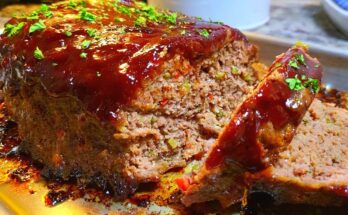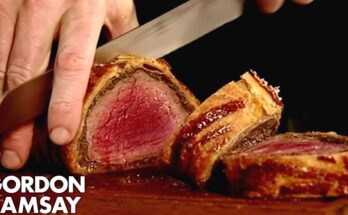Iced Tea Recipe: Iced tea is more than just a chilled beverage—it’s a lifestyle, especially during those warm, sun-kissed days. At its core, iced tea is simply brewed tea served cold. But behind that simplicity lies a world of flavors, preparation styles, and customizations. Unlike its hot counterpart, iced tea offers a refreshing experience, whether you’re sipping it on a porch swing or packing it for a beach picnic.
Originating in the United States, iced tea has become a global favorite. It’s versatile, easy to make, and can be crafted to suit anyone’s taste—from sugary sweet Southern styles to unsweetened, subtly aromatic versions. If you’ve never made iced tea before, don’t worry—it’s a beginner-friendly recipe that requires minimal ingredients and effort. The beauty of iced tea lies in its adaptability. Whether you like black, green, or herbal tea, there’s a version for everyone.
Why Iced Tea is a Refreshing Choice
There’s a reason why iced tea is the go-to drink in the summer: it’s hydrating, low in calories (if unsweetened), and immensely customizable. Unlike sugary sodas, iced tea can be as healthy as you want it to be. Infuse it with fruits, herbs, or spices, and you’ve got a flavorful treat without compromising your health.
Iced tea also promotes relaxation. There’s something inherently calming about sipping a cold, aromatic tea while enjoying nature or unwinding after a long day. Not to mention, tea contains antioxidants, which can help detoxify your body and improve digestion. So, beyond just being refreshing, iced tea supports your overall wellness.
Ingredients You’ll Need
Basic Ingredients for Classic Iced Tea
Let’s keep things simple. To make a classic iced tea, you don’t need a fancy kitchen or rare ingredients. Here’s what you need:
- Tea bags (black tea is traditional)
- Water
- Sugar or sweetener (optional)
- Ice cubes
- Lemon slices (optional)
Black tea is often the go-to because of its bold flavor, but green tea or white tea also work if you’re looking for something lighter. Choose a good-quality tea, as that will significantly impact the final taste. Stick to plain tea bags or loose-leaf tea if you want to get a bit more gourmet.
Optional Add-Ins and Flavor Enhancers
Want to jazz up your iced tea? Here are some popular add-ons:
- Fresh herbs like mint or basil
- Fruits like peach slices, berries, or citrus
- Honey, maple syrup, or flavored syrups
- Spices like cinnamon or ginger
- Baking soda (a pinch removes bitterness)
These ingredients can add depth and variety to your iced tea, making each batch feel unique. Whether you like it fruity, floral, or slightly spicy, there’s a combination out there waiting for you to try.
Tools Required to Make Iced Tea
You don’t need a commercial-grade setup to brew a good iced tea. Here’s what you’ll need:
- Saucepan or kettle to boil water
- Pitcher or jug to hold the tea
- Strainer or sieve (if using loose-leaf tea)
- Spoon for stirring
- Measuring cup (for precision)
- Glasses and ice trays
Most of these are already in your kitchen. If you’re into gadgets, cold brew makers and tea infusers are nice-to-haves, but totally optional.
Step-by-Step Guide to Making Classic Iced Tea
Step 1: Boil the Water
Start by boiling 4 cups of water in a saucepan or kettle. Fresh, cold water is ideal for this—it helps extract the best flavors from the tea. The water should be at a rolling boil before you add your tea bags.
If you’re using green or white tea, keep an eye on the temperature; boiling water can burn the delicate leaves, leading to bitterness. For these, aim for around 175°F (80°C).
Step 2: Steep the Tea
Turn off the heat once the water boils and drop in 4-6 tea bags, depending on how strong you like it. Let them steep for 5–10 minutes. The longer the steep, the stronger the flavor—but don’t overdo it, or you’ll end up with a bitter aftertaste.
If you’re using loose-leaf tea, use about 1 teaspoon per cup of water and strain it afterward. Cover the pot while steeping to retain the aromatic oils. This is the foundation of your iced tea, so make it count.
Tips for Perfect Iced Tea Every Time
Crafting the perfect glass of iced tea is both an art and a science. While the basic process is straightforward, a few nuanced tips can elevate your brew from good to exceptional.
1. Choose Quality Tea: The foundation of great iced tea lies in the quality of the tea itself. Opt for high-quality loose-leaf teas or reputable tea bags. Loose-leaf teas often provide a richer flavor profile, allowing the subtle notes to shine through. If using tea bags, ensure they are fresh and from a trusted brand.
2. Mind the Water Temperature: Different teas require specific water temperatures to extract optimal flavors. For black teas, boiling water (around 212°F or 100°C) is ideal. Green and white teas are more delicate and should be steeped in water that’s between 160°F to 185°F (71°C to 85°C) to prevent bitterness.
3. Steeping Time Matters: Over-steeping can lead to a bitter taste, while under-steeping might result in a weak brew. As a general guideline:
- Black tea: 3-5 minutes
- Green tea: 2-3 minutes
- Herbal tea: 5-7 minutes
Adjust based on personal preference and the specific tea variety.
4. Sweeten While Hot: If you prefer sweetened iced tea, add your sweetener while the tea is still hot. This ensures it dissolves completely, providing a consistent sweetness throughout. Common sweeteners include granulated sugar, honey, or simple syrup.
5. Cool Before Refrigerating: Allow the brewed tea to cool to room temperature before placing it in the refrigerator. This prevents cloudiness and helps maintain clarity in your iced tea.
6. Use Fresh Add-ins: Enhance the flavor by adding fresh ingredients like lemon slices, mint leaves, or berries. These not only add a burst of flavor but also make your iced tea visually appealing.
7. Store Properly: Store your iced tea in a clean, airtight container in the refrigerator. Consume within 3-5 days for the best taste. Always use clean utensils when serving to prevent contamination.
8. Experiment with Flavors: Don’t hesitate to mix different tea types or add natural flavors. Combining black and green teas or infusing with herbs like basil or rosemary can create unique and delightful variations.
By paying attention to these details, you can consistently brew iced tea that’s refreshing, flavorful, and tailored to your taste preferences.
Variations to Try
Lemon Iced Tea
Lemon iced tea is a timeless classic. Its tangy zest complements the deep notes of black tea perfectly, making it one of the most beloved variations. To prepare, follow the basic iced tea method, then add fresh lemon juice after steeping. One lemon typically yields 2–3 tablespoons of juice, which is enough to flavor a standard batch.
If you’re looking for a richer lemon essence, consider adding lemon zest while the tea steeps. For sweetness, opt for honey or simple syrup. You can also garnish with lemon slices or even a sprig of thyme for a subtle herbal twist.
Lemon not only adds vibrancy to the drink but also brings vitamin C and antioxidants to the table. It’s a perfect option for those hot days when you need something light and rejuvenating. Try freezing lemon slices in your ice cubes for a slow-releasing citrus punch!
Peach Iced Tea
Peach iced tea screams summer. It’s fruity, aromatic, and naturally sweet. Start by preparing a classic black tea base. While the tea is steeping, puree two ripe peaches and strain the juice to remove pulp (unless you like a pulpy texture). Mix this juice into your tea and chill.
Alternatively, you can simmer sliced peaches with sugar and water to create a peach syrup, then mix that into your tea. Either method delivers a drink that’s sweet, fragrant, and irresistible.
You can take it up a notch by combining peach with ginger or basil. These combinations bring out layers of flavor, creating a tea that’s both complex and crowd-pleasing. It’s also a great base for spiked versions if you’re looking for an adult twist.
Herbal and Green Tea Variants
Not a fan of black tea? No worries—green tea and herbal infusions make equally stunning iced teas. Green tea offers a lighter, earthier flavor and pairs well with cucumber, mint, or citrus fruits. Just remember to steep it at a lower temperature to avoid bitterness.
Herbal teas, such as hibiscus, chamomile, or rooibos, provide caffeine-free alternatives and come in naturally sweet and tangy flavors. Hibiscus iced tea, for example, is tart and cranberry-like, often enjoyed with a touch of honey and lime.
These alternatives are fantastic if you’re looking for something unique, especially if you want to avoid caffeine. Plus, they open the door to a whole world of color—think ruby red hibiscus or golden chamomile in a glass over ice.
How to Store Iced Tea Properly
Storing iced tea correctly ensures it stays fresh, clear, and delicious for days. Improper storage can lead to cloudiness, off-flavors, or even bacterial growth.
1. Use Airtight Containers: After brewing, transfer your cooled tea into a clean, airtight glass pitcher or bottle. Avoid plastic containers as they may absorb odors and flavors.
2. Refrigerate Promptly: Iced tea should be refrigerated within one hour of cooling. Leaving it out too long can affect the taste and safety of the beverage.
3. Keep it Cold: Always store iced tea at 40°F (4°C) or below. This helps preserve its taste and slows down any microbial growth.
4. Add Fresh Garnishes Later: Avoid storing tea with lemon slices, herbs, or fruits already added, as these can break down and cause bitterness or cloudiness. Add them just before serving.
5. Shelf Life: Ideally, consume your iced tea within 3–5 days. After that, it may start to lose flavor or develop an off smell. Always do a sniff test before serving leftovers.
6. Cloudy Tea Fix: If your iced tea turns cloudy after refrigeration, it’s likely due to rapid chilling. Letting the tea cool at room temperature before refrigerating usually solves this problem. If it’s already cloudy, it’s still safe to drink—it just doesn’t look as nice.
Health Benefits of Iced Tea
While iced tea is undeniably refreshing, it also brings a surprising range of health benefits to your glass.
1. Rich in Antioxidants: Most teas—especially green, black, and white—are packed with antioxidants such as catechins and flavonoids. These compounds help fight free radicals, supporting your immune system and potentially reducing the risk of chronic diseases.
2. Hydration Hero: Unsweetened iced tea is a great way to stay hydrated without the added sugars found in sodas and juices. Herbal teas, in particular, are caffeine-free and perfect for all-day sipping.
3. Supports Digestion: Teas like peppermint, ginger, and chamomile can soothe the digestive system. An iced tea made with these herbs can help reduce bloating, gas, and stomach discomfort.
4. May Boost Heart Health: Some studies suggest that regular tea consumption can improve heart health by lowering blood pressure and reducing cholesterol levels. The key here is to go easy on the sugar.
5. Weight Management: Tea can be a great companion in weight management. It’s calorie-free when unsweetened and some varieties like green tea may slightly boost metabolism.
Remember, the healthiness of your iced tea depends on how you make it. Skip the sugar and go natural with fruit infusions or stevia if you want to keep it clean and guilt-free.
FAQs about Iced Tea Recipe
Can I make iced tea without boiling water?
Yes, you can make iced tea using the cold brew method. Just place tea bags or loose tea in cold water and let it steep in the fridge for 6–12 hours. It’s a gentler process that brings out a smoother flavor, especially with green or herbal teas.
How long can I store homemade iced tea?
Homemade iced tea can be stored in the refrigerator for up to 3–5 days in a sealed container. Always check for changes in smell or taste before consuming, especially if you’ve added fruits or herbs.
What is the best sweetener for iced tea?
That depends on your preference! Classic sweet tea uses granulated sugar, but honey, agave, and simple syrup are also great choices. For a low-calorie option, try stevia or monk fruit sweetener. Add it while the tea is hot to ensure it dissolves well.
Can I use loose tea instead of tea bags?
Absolutely. Loose tea often gives a richer flavor. Use about 1 teaspoon of loose tea per 8 ounces of water. You’ll need a strainer or infuser to keep the leaves out of your final brew.
How do I prevent my iced tea from getting cloudy?
Let your brewed tea cool at room temperature before refrigerating it. Rapid chilling often causes cloudiness. Using filtered water and not over-steeping can also help keep your tea crystal clear.
Conclusion
The beauty of iced tea lies in its simplicity and versatility. With just a few basic ingredients, some thoughtful add-ins, and a little patience, you can craft a drink that’s perfect for your taste and lifestyle. Whether you’re lounging by the pool, hosting a summer brunch, or just looking for a healthier alternative to sugary drinks, iced tea fits the bill.
And the best part? It’s completely customizable. Don’t be afraid to mix flavors, try new herbs, or tweak the sweetness to your liking. Make it once, and you’ll see why iced tea isn’t just a beverage—it’s an experience.
So go ahead, grab your favorite tea, boil some water, and get brewing. The perfect glass of iced tea is just a few steps away.



